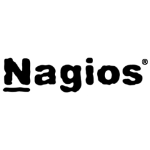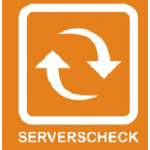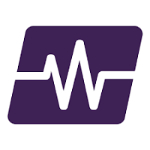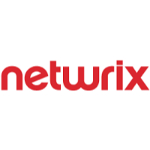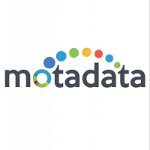
TechnologyCounter provides genuine, unbiased real user reviews to help buyers make informed decisions. We may earn a referral fee when you purchase through our links, at no extra cost to you.
List of 15 Best Server Monitoring Tools
Showing 1 - 15 of 50 products
ManageEngine OpManager
Monitor routers, switches, firewalls, servers, and VMs for fault and performance
ManageEngine OpManager is a comprehensive network monitoring solution that offers real-time insights into the health, availability, and performance of network devices. The solution provides advanced fault and performance management capabilities acros...Read ManageEngine OpManager Reviews
ManageEngine OpManager MSP is a multi-client powerful network monitoring and management tool designed for service providers to proactively oversee and manage their clients networks from a remote location...Read ManageEngine OpManager MSP Reviews
ManageEngine Site24x7 is a SaaS-based, AI-powered observability platform for DevOps and IT operations. The cloud-based platform’s broad capabilities help predict, analyze, and troubleshoot problems with end-user experience, applications, microservi...Read ManageEngine Site24x7 Reviews
Auvik is a network management tool designed to simplify and streamline the complexities of IT infrastructure management. With its intuitive interface features, Auvik helps businesses effectively monitor, troubleshoot, and secure their networks for ma...Read Auvik Reviews
Nagios, a powerful monitoring and alerting software, helps businesses ensure the smooth is a functioning of their IT infrastructure. With its advanced features and user-friendly interface, Nagios allows for real-time tracking and troubleshooting of n...Read Nagios Reviews
ServersCheck is a highly reliable software that facilitates efficient monitoring of servers, networks and applications to ensure seamless operations for businesses. With its advanced features and user-friendly interface, ServersCheck helps organizati...Read ServersCheck Reviews
Opsview is a powerful, all-in-one monitoring solution designed to keep your systems running smoothly. With Opsview, you can easily track the health and performance of your IT infrastructure, ensuring maximum uptime and efficiency. Say goodbye to tedi...Read opsview Reviews
AppDynamics is a software that enables businesses to monitor, troubleshoot and optimize their applications and systems in real-time. With its advanced features interface, AppDynamics allows users to gain valuable insights, enhance performance and del...Read AppDynamics Reviews
Netwrix is a leading provider of innovative IT auditing and security software solutions. With a focus on helping organizations identify and mitigate cybersecurity risks, Netwrix offers a range of robust and user-friendly products that enable business...Read Netwrix Reviews
Zenoss is a IT monitoring and management software that takes a holistic approach to overseeing your entire technology stack. With its user-friendly interface automation, Zenoss allows businesses to proactively monitor their systems for potential issu...Read Zenoss Reviews
PA Server Monitor is an advanced monitoring software designed to provide businesses with real-time visibility into the health and performance of their servers. With its powerful features and customizable alerts, PA Server Monitor helps organizations...Read PA Server Monitor Reviews
Motadata is more than just a software - it is a IT analytics platform that enables organizations to make data-driven decisions. With a user-friendly interface functionalities, Motadata simplifies complex IT operations and helps improve performance, s...Read Motadata Reviews
CloudStats, the innovative software that revolutionizes the way businesses monitor and manage their cloud infrastructure. With its intuitive interface and powerful features, CloudStats helps organizations of all sizes stay on top of their cloud resou...Read CloudStats Reviews
Server Density is a server monitoring solution designed to help businesses of all sizes effectively manage their infrastructure. With a user-friendly interface features, Server Density allows you to monitor and analyze your servers in real-time, ensu...Read Server Density Reviews
FrameFlow is a software designed to monitor, manage, and troubleshoot your IT infrastructure with ease and efficiency. With its user-friendly interface features, FrameFlow ensures that your systems are running smoothly at all times, allowing you to f...Read FrameFlow Reviews
- What Is Server Monitoring Tools?
- Top Reasons Why Businesses Need Server Monitoring Tools?
- What Are the Top Key Features of Server Monitoring Tools?
- What Are the Top Benefits of Server Monitoring Tools?
- What Are the Steps to Choose the Right Server Monitoring Tools?
- What Are the Types of Server Monitoring Tools for Different Industries?
- What Are the Types of Server Monitoring Tools for Different Industries?
- What Are the Deployment Options for Server Monitoring Tools?
What Is Server Monitoring Tools?
Server monitoring tools refer to software applications utilized for the remote monitoring and maintenance of servers. This technology can be employed to assure the continuous operation of servers and to monitor their performance. Server monitoring software can also serve the purpose of storing logs that record server activity, which can be utilized for capacity planning and server maintenance.
The aforementioned tools possess the capability to monitor and analyze disk and memory utilization, performance metrics of server components, network traffic patterns, as well as power consumption. Moreover, it has the capability to generate specific notifications in the event of certain occurrences, such as the unexpected termination of a process or the attainment of a predetermined temperature threshold by a server.
The practice of server monitoring aids in the early identification of anomalies prior to their escalation into critical issues. Additionally, it aids in the identification of hardware or software issues and offers comprehensive insights into the performance of a server.
In addition, the practice of monitoring backups and data logs can contribute to the maintenance of up-to-date data and the consistent execution of backup processes. The functions offered by top server monitoring tools can vary across vendors, contingent upon the specific software being utilized.
The spectrum of available tools encompasses those with rudimentary monitoring capabilities as well as those with more intricate functionalities. In general, server monitoring technologies has the capability to promptly and effectively detect and resolve server-related problems, hence aiding IT teams in their operational endeavors.
Additionally, it can be beneficial to anticipate future performance patterns and ascertain the need for hardware or software updates. Monitoring tools can additionally serve the purpose of facilitating the planning of server maintenance and upgrade plans.
Top Reasons Why Businesses Need Server Monitoring Tools?
1. Proactive and Enhanced Monitoring - The best server monitoring software offers a proactive way to detect potential system performance issues prior to their escalation into more severe complications.
2. Receive Alerts Quickly - Server monitoring systems rapidly identify problems and notify IT professionals about potential risks, enabling them to promptly implement corrective actions.
3. Evaluate System Performance - Through the monitoring of server performance, IT workers are able to readily detect any system issues that may be diminishing performance or leading to instability.
4. Detect Security Issues - By utilizing cloud server monitoring tools, prompt identification of potential security vulnerabilities becomes possible, enabling prompt implementation of corrective steps to prevent system compromise.
5. Manage Resources Efficiently - Online server monitoring tools enable IT staff to assess resource use and enhance system resources to enhance overall performance.
6. Track Applications Performance - The timely identification and resolution of performance issues can be achieved through the monitoring of apps deployed on the server.
7. Identify Potential Bottlenecks - Server monitoring technologies provide the capability to detect possible bottlenecks in the performance of both systems and applications.
8. Monitor Updates and Patches - The best server monitoring software provide the capability to detect possible bottlenecks that may impede the operation of systems and applications.
9. Keep Track of Service Outages - Server monitoring systems are capable of notifying IT employees about service disruptions, enabling them to swiftly implement corrective measures.
10. Track Database Performance - Through the process of monitoring database performance, IT workers are able to discern the specific regions within the database that are operating at maximum capacity, as well as discover any flaws that necessitate remedial measures.
11. Monitor CPU Usage - Through the monitoring of CPU consumption, system administrators are able to discern certain locations within the system that are consuming excessive processing power, hence leading to a decrease in overall system performance.
12. Monitor Memory Usage - Through the process of monitoring memory usage, information technology employees have the ability to discern certain locations within the system that exhibit excessive memory consumption, hence leading to suboptimal performance of applications.
13. Monitor Hard Drive Space - Through the process of monitoring hard drive space, top server monitoring tools are able to ensure that the server possesses enough amount of storage capacity to accommodate all applications and data.
14. Monitor Network Connections - Through the process of monitoring network connections, IT staff have the ability to identify and address issues pertaining to networks, as well as detect instances of unauthorized access and usage.
15. Monitor Server Uptime - Top server monitoring tools enable IT staff to assess server uptime and oversee server availability, hence ensuring optimal system availability.
What Are the Top Key Features of Server Monitoring Tools?
The top key features of server monitoring tools include:
1. Resource Usage Monitoring: The monitoring of server resources, including CPU, memory, disk space, network utilization, and other relevant components, is crucial for maintaining optimal efficiency and reliability of the server.
2. Alerts and Notifications: The online server monitoring tools generate alerts and notifications to promptly inform administrators of potential performance difficulties, configuration errors, or security threats.
3. Performance Monitoring: The task involves monitoring the performance and availability of servers through the collection of performance data, analysis of trends, and provision of real-time visibility.
4. Security Monitoring: The monitoring process involves the identification of vulnerabilities, detection of unauthorized access attempts, and recognition of potential hostile behaviors.
5. Automation and Orchestration: The top server monitoring tools process of automating the deployment, setup, maintenance, and remediation of servers is implemented to maintain a consistently optimized server environment.
6. Reporting and Analysis: This task involves producing thorough reports and conducting analysis on the gathered data and metrics in order to enhance understanding of server performance, use, and availability.
7. Configuration Management: The individual oversees the management of server configurations and settings, ensuring ongoing configuration auditing and adherence to industry best practices.
8. Capacity Planning: This study examines the performance and use of servers in order to anticipate and prepare for future capacity requirements.
What Are the Top Benefits of Server Monitoring Tools?
1. Improved Uptime and Availability: Server monitoring solutions are utilized to offer real-time performance statistics and warning mechanisms, thereby ensuring the continuous accessibility and smooth operation of applications.
2. Increased Efficiency: Online server monitoring tools offer real-time feedback and evaluations, enabling IT teams to promptly detect difficulties and ascertain their underlying causes, hence facilitating the implementation of appropriate measures to address and fix problems.
3. Improved Security: Cloud server monitoring tools have the capability to identify malicious activities, including viruses, malware, and Denial-of-Service attacks. This enables IT teams to proactively implement preventive steps in order to mitigate any damage.
4. Reduced Costs: Server monitoring technologies have the capability to detect issues in advance, thereby enabling IT teams to prevent unforeseen maintenance and downtime costs.
5. Improved User Experience: Online server monitoring tools have the capability to furnish network data, including metrics such as latency, packet loss, and throughput. This enables IT teams to verify the satisfactory performance of all applications and guarantee a favorable user experience.
6. Streamlined Tracking: The best server monitoring software offer comprehensive logs that can be promptly searched to effectively monitor and document all modifications and operations, ensuring adherence to regulatory requirements.
What Are the Steps to Choose the Right Server Monitoring Tools?
1. Identify your server monitoring needs: Consider the various categories of server resources that necessitate monitoring, as well as the specific data that requires tracking. It is important to also take into account the aspect of scalability, the necessity of monitoring many servers, the requirement for setting alerts and thresholds, and the level of automation desired.
2. Research server monitoring tools: Conduct a comprehensive investigation into the various alternatives. When evaluating a product or service, it is important to take into account various elements that can significantly impact its effectiveness and suitability for a particular context.
These features include cost, ease of use, compatibility, capacity, configurable alerts and reports, security, scalability, and vendor support. By carefully considering these aspects, individuals and organizations can make informed decisions that align with their specific needs and requirements.
3. Make a decision: Once a thorough comparison has been conducted between the specific requirements and functionalities of several tools, it is imperative to arrive at a conclusive selection. It is advisable to engage in the practice of inquiring and examining consumer comments and ratings before finalizing one's choice.
4. Implement the tool: The initial step in implementing the top server monitoring tool is the installation of the necessary software, followed by the configuration of relevant parameters. Subsequently, the servers are established and configured accordingly.
5. Establish performance baseline: One effective approach to gauge progress and identify potential issues in the future is to establish a baseline of performance.
6. Monitor: Begin server monitoring. Monitor the performance of your servers and applications, making changes when needed to ensure the highest levels of performance are being achieved.
What Are the Types of Server Monitoring Tools for Different Industries?
Server monitoring solutions are specifically developed to monitor the overall health of infrastructure by effectively notifying administrators about potential issues and facilitating troubleshooting processes. The specific tool needed may differ depending on the industry in question.
In the context of the web hosting sector, the utilization of a comprehensive online server monitoring tools is vital in order to effectively monitor and manage the multitude of customer websites. Monitoring tools should include the capability to effectively monitor and assess the availability and performance of various components such as websites, databases, apps, and network traffic. One illustration of a monitoring tool for web hosting servers is Nagios.
In the financial services industry, it is imperative for server monitoring solutions to possess the capability of ensuring continuous monitoring of various services, including bookkeepers and insurance agents, throughout the day and night. The tools utilized should possess the capability to identify issues pertaining to high-velocity financial transactions, while also offering alert mechanisms to notify personnel in the event of service level discrepancies.
In the healthcare sector, it is imperative for online server monitoring tools to possess the capability to effectively monitor and manage patient records, laboratory findings, and medication prescriptions. A server monitoring solution should possess the capability to identify any modifications made to patient records, as well as identify any potential medical errors.
Splunk is an exemplar healthcare server monitoring tool. The e-commerce business necessitates the use of a monitoring tool in order to identify alterations in customer usage patterns, assess server performance, and ensure the availability of web applications.
E-commerce monitoring software should possess the capability to activate alerts in the event of server performance degradation, as well as identify instances of unwanted access. One instance of an e-commerce server monitoring tool is New Relic.
What Are the Types of Server Monitoring Tools for Different Industries?
The primary technological advancements in server monitoring technologies encompass cloud-based monitoring, configuration management, log analysis, and automated incident response. Cloud-based monitoring has gained significant popularity in recent years due to its ability to host and manage server monitoring tools across many cloud-based providers.
Top server monitoring tools enable the monitoring of servers in a dependable and cost-effective manner. Furthermore, cloud-based solutions offer expedient and effective access to server monitoring capabilities, along with the capacity to adapt to the expanding requirements of an enterprise.
Configuration management offers a standardized and coherent approach to preserving and monitoring the intended state of server setups. This technological advancement facilitates the automated implementation of organizational policies, hence mitigating the occurrence of misconfigurations that can result in security breaches and performance degradation.
The utilization of log analysis technology enables the examination of server log data in order to identify potential risks, issues related to performance, illegal efforts to gain access, and other relevant factors. The ability to monitor server log data in real-time enables enterprises to promptly respond to threats and issues, thereby safeguarding the security and compliance of their server infrastructure.
Automated incident response is a technological solution aimed at minimizing the temporal gap between the identification of a problem and its resolution. The implementation of automated procedures in response to issues significantly reduces reaction time, hence enhancing the security and dependability of servers.
What Are the Deployment Options for Server Monitoring Tools?
When implementing the best server monitoring software, there exist four primary alternatives: On-Premise, Cloud, Hybrid, and SaaS (Software-as-a-Service). The implementation of on-premise systems necessitates the installation of monitoring tools at the physical location, thereby ensuring that all data and resources are retained within the organization's premises.
This approach provides increased levels of control, albeit at the potential cost of additional manual labor and the need for staff with specialized skills for both the initial setup and ongoing maintenance. The utilization of cloud computing infrastructure is employed in the deployment of monitoring tools, facilitating the storage of data and the implementation of those instruments.
This method provides the advantage of scalability; nevertheless, it is important to consider the potential drawbacks of increased expenses and limited data security alternatives. Hybrid deployment entails the integration of cloud-based and on-premise storage and deployment strategies, thereby enabling enterprises to leverage the benefits offered by both systems.
In order to achieve integration between the two systems, customization will be necessary. The deployment of SaaS (Software-as-a-Service) is facilitated by an external service provider, which is often regarded as the most economically efficient choice.
The hosting of data is primarily conducted remotely; nevertheless, in comparison to cloud deployments, maintenance and management can be more actively managed.



